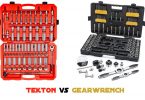Looking for car speakers? Need to fix or replace old ones? What type do you want to go for? Need to revamp your car’s sound system? Here’s what you need to know all about car speakers!
Basic Elements of a car speaker
Car speakers most commonly consist of woofers for lower frequency sounds and tweeters for higher ones. Some have a subwoofer and/or a super tweeter, external crossovers, etc.
Woofers: Woofers are the round shaped loudspeaker that produces low pitched sounds in a car speaker. Sounds with lower frequencies have longer wavelengths and thus need a bigger device. So, the size of woofers in a speaker is larger than that of a tweeter. The term woofer comes from ‘woof’ referring to the low pitched bark of dogs.
Subwoofers: Subwoofers are a special type of woofers that focus on the lowest frequencies of sound known as bass, adding depth to your music. There are usually two types of subwoofers- active and passive. An active subwoofer consists of a subwoofer driver, an enclosure and an in-built amplifier while a passive one requires an external amplifier along with the other two components.
So if you are frugal, get an active subwoofer. Subwoofers’ sizes vary from 8 to 15 inches. They are normally positioned behind or under the car seats and sometimes even in the trunk of a car.
Tweeters: A tweeter is an audio driver in a car speaker that specializes on the higher end of the audible spectrum, meaning high pitched sounds. Depending on the speaker’s abilities, the tweeter can generate sounds starting from 3kHz to 20kHz (common human hearing range- 20Hz to 20kHz). It makes refined sounds like cymbals and voices in the music.
The sound waves with higher frequency are smaller and more directional. So install tweeters as close to the listeners as possible. Always keep in mind that it cannot be too far from woofers. Then different sounds will reach your ears at different times. Tweeters are generally the tiniest speakers in a car audio system, varying from 0.5 to 1.5 inches in size. The word tweeter originates from the word ‘tweet’ that is used to imitate the sounds of birds chirping.
Tweeters are generally the tiniest speakers in a car audio system, varying from 0.5 to 1.5 inches in size. The word tweeter originates from the word ‘tweet’ which is used to imitate the sounds of birds chirping.
Super Tweeters: For those with keen ears for highly detailed music, there are super-tweeters. Being even smaller than an average sized tweeter, it hits the highest of the notes. A typical tweeter at times may distort or be unable to deal with music that has ultra-high frequencies. A super-tweeter solves the issue by generating sound waves around and over the range of 20 kHz.
Crossovers: Just like road signs on the crossroads this electronic device directs sound frequencies to the correct drivers. They are the element that is responsible for turning a single audio signal into multiple signals.
Crossovers are a box-like device that helps tweeters and woofers. They split a signal into bands of low, mid and high range based on their frequencies. So the audio drivers can generate sounds according to their specialties and don’t have to waste their energy making the wrong sounds.
Now that you have a clear idea about the basic devices, let’s get to the speaker types.
Types Of Car Speakers
Component speakers
Component speakers, as their name suggests are the system that comprises several components (speakers and drivers) and you can integrate them at different locations in a car. So they are ideal for customization but the installation process is quite complex.
For a component system, you have to get separate speakers to handle the bass, middle and high frequencies. Plus, an external crossover is required to control the audio input signals.
Full range or coaxial speakers
These are most commonly found and sold in stores. So, if you want to replace factory speakers, you can simply DIY at home with these. Most car manufactures have full range setups as their standard speaker system.
To sum it up, coaxials are audio systems with devices for all frequencies of sound incorporated in a single unit and you can install them easily. More often than most, they contain different sized woofers with a tweeter allocated either to the top or on a pole running to the middle.
Other Types
To get an even better audio experience, along with tweeters and woofers, you can add mid bass and/or mid range speakers. They are the most ideal for sounds that neither tweeters nor woofers can produce.
Mid Bass: These are speakers that generate deeper sounds in mid to low-bass frequencies. So they are the best for bass drums and lower octave vocals. Mid bass speakers are usually 6.5 inches to 8 inches in size. These speakers are adaptable and can be used in both component and full range systems.
Mid Range: Midrange speakers reproduce sound that mid bass and tweeters cannot do with clarity. They create frequencies in the middle of the audio spectrum (250-2000 Hz). Midrange drivers range in size from 3.5 inches to 6.5 inches. They have a round shape and are installed in the car doors.
Comparison between component and full-range systems
Installation: In a coaxial system, the speakers and drivers are assimilated together in one place and the installation process is less demanding unlike that of the component speakers. You just need a few tools and can save a lot of time and money. Unless you have the mandatory expertise in this area, hire someone to install component speakers in the car.
Sound Quality: Component systems contain speakers with a developed design and multiple drivers for higher tonal clarity. Each driver is programmed to manage frequencies within its own ideal range. Also, the manufacturers most of the time make these with better quality materials than full-range speakers. Hence they are able to produce detailed and dynamic sounds.
Customization: Component speakers are feasible for customization and you can place them in any location in your car. This creates detailed and accurate sounds. But full range speakers do not have this flexibility. So they deliver sounds that are average in terms of quality and accuracy.
Affordability: Full-range speakers do not require an additional amplifier and thus, really affordable. As for component speakers, they need a separate amplifier along with an external crossover which makes them pretty expensive, especially when you need to hire an expert for installation.
So the bottom line is, if you need a simple set of speakers, get a full range one. If you are not obsessed with musical details and certainly don’t want to spend too much, it will work for you. If you want a heavy upgrade with high quality sounds and do not need to worry about affordability, go for a component system.
FAQs:
1. How much should I spend on car speakers?
It depends on how much you want to and can afford.
2. Does Cone Material Affect Sound Quality?
Yes, it does. For example, woofers require fabric materials or rubber surrounds for better tonal clarity.
3. What are the best speakers for a car?
Try going through reviews on popular websites and gather information on your car. Also, try to ask people who use the same car as you do.
4. What is a full range car speaker?
Full range speakers are the default factory speaker on your car, with all the drivers put together in one place.
5. How Do I Choose the Right Speakers for My Car Stereo?
Try to check the power output of your stereo and get the speakers with the same amount of power output.










Leave a Comment